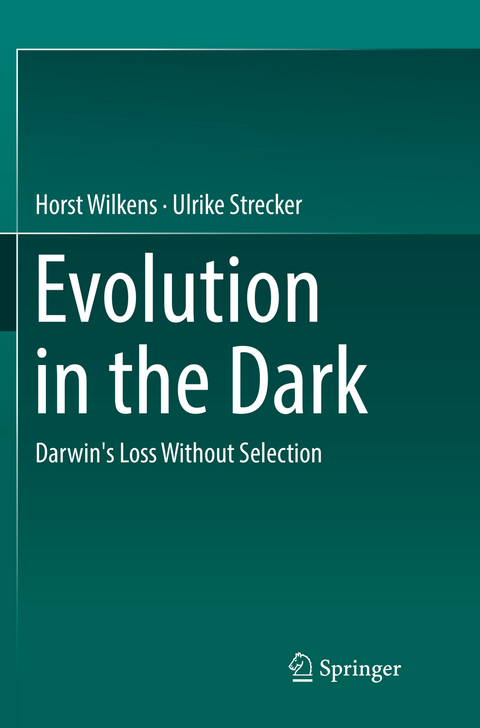
Evolution in the Dark
Springer Berlin (Verlag)
978-3-662-57201-6 (ISBN)
Biologically functionless traits show high variability, which results from neutral deleterious mutations no longer being eliminated by natural selection, which normally acts to preserve functional capability. These negative mutations accumulate until the traits they are responsible for become rudimentary or even lost.
The random genetic basis of regressive evolution is in accordance with Nei's Neutral Theory of Molecular Evolution , which applies to the molecular level. Such processes are particularly conspicuous in species living in constant darkness, where, for example in Astyanax , all traits depending on the exposure to light, like eyes, pigmentation, visually triggered aggressive behaviour, negative phototaxis, and several peripheral outcomes of circadian rhythmicity, are useless and diminish. In compensation constructive traits like taste, olfaction or the lateral line senses are improved by selection and do not show variability. Regressive and constructive traits inherit independently, proving that the rudimentation process is not driven by pleiotropic linkage between them. All these traits are subject to mosaic evolution and exhibit unproportional epistatic gene effects, which play an important role in evolutionary adaptation and improvement.
Offering valuable evolutionary insights and supplemented by a wealth of illustrations, this book will appeal to evolutionary and developmental biologists alike.
Prof. Dr. Horst Wilkens
Evolution in the dark - introduction.- The role of rudimentation in evolution.- Diversity and phylogenetic age of cave species.- Surface and cave populations of Mexican Astyanax.- Complexity of interrelationship of cave and surface fish.- Regressive and constructive traits in Astyanax surface and cave fish.- Mechanisms of regressive evolution.
"Anyone who works on any aspect of the biology of this species will need to read this book from cover to cover, certainly more than once, and become critically familiar with the very many details of all aspects of the life of this animal. This book is amongst the most important books on subterranean biology ever written and should be essential reading for all interested in life in the dark." (G. Proudlove, Journal of Fish Biology, Vol. 91 (6), 2017)
“Anyone who works on any aspect of the biology of this species will need to read this book from cover to cover, certainly more than once, and become critically familiar with the very many details of all aspects of the life of this animal. This book is amongst the most important books on subterranean biology ever written and should be essential reading for all interested in life in the dark.” (G. Proudlove, Journal of Fish Biology, Vol. 91 (6), 2017)
| Erscheint lt. Verlag | 15.5.2018 |
|---|---|
| Zusatzinfo | IX, 217 p. 107 illus., 59 illus. in color. |
| Verlagsort | Berlin |
| Sprache | englisch |
| Maße | 155 x 235 mm |
| Gewicht | 3933 g |
| Themenwelt | Naturwissenschaften ► Biologie ► Evolution |
| Schlagworte | astyanax • Cave animals • Cave fish • Cave species • Phylogeny • Regressive evolution • Regressive traits • Rhamdia • Rudimentation |
| ISBN-10 | 3-662-57201-X / 366257201X |
| ISBN-13 | 978-3-662-57201-6 / 9783662572016 |
| Zustand | Neuware |
| Haben Sie eine Frage zum Produkt? |
aus dem Bereich


